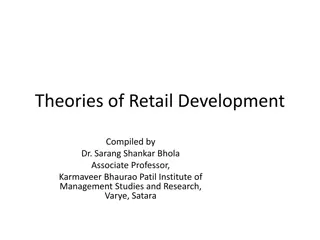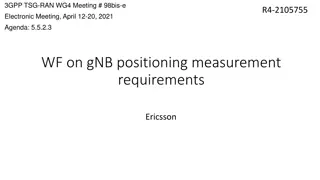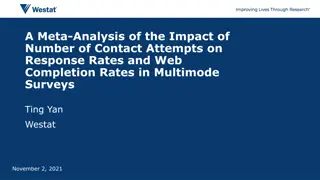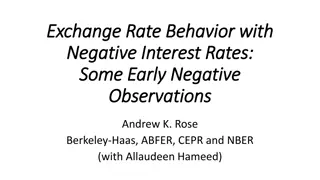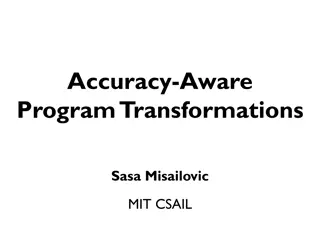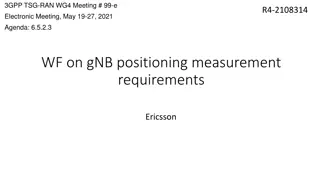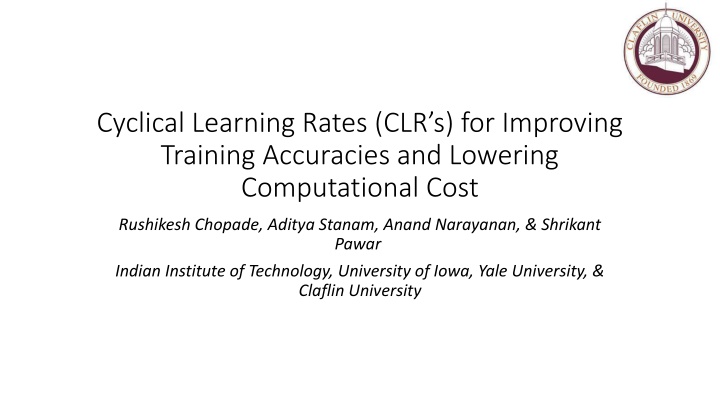
Cyclical Learning Rates for Enhanced Training Accuracy
The article explores Cyclical Learning Rates (CLRs) to enhance training accuracies and reduce computational costs for image classification problems in medical diagnostics, using various neural network architectures and optimizers.
Download Presentation

Please find below an Image/Link to download the presentation.
The content on the website is provided AS IS for your information and personal use only. It may not be sold, licensed, or shared on other websites without obtaining consent from the author. If you encounter any issues during the download, it is possible that the publisher has removed the file from their server.
You are allowed to download the files provided on this website for personal or commercial use, subject to the condition that they are used lawfully. All files are the property of their respective owners.
The content on the website is provided AS IS for your information and personal use only. It may not be sold, licensed, or shared on other websites without obtaining consent from the author.
E N D
Presentation Transcript
Cyclical Learning Rates (CLRs) for Improving Training Accuracies and Lowering Computational Cost Rushikesh Chopade, Aditya Stanam, Anand Narayanan, & Shrikant Pawar Indian Institute of Technology, University of Iowa, Yale University, & Claflin University
Image classification problems? Prediction of different lung pathologies using chest X-ray images is a challenging task requiring robust training and testing accuracies. In this article, one-class classier (OCC) and binary classification algorithms have been tested to classify 14 different diseases (atelectasis, cardiomegaly, consolidation, effusion, edema, emphysema, fibrosis, hernia, infiltration, mass, nodule, pneumonia, pneumothorax and pleural-thickening). We have utilized 3 different neural network architectures (MobileNetV1, Alexnet, and DenseNet-121) with four different optimizers (SGD, Adam, and RMSProp) for comparing best possible accuracies.
Cyclical learning rate (CLR)s Cyclical learning rate (CLR), a tuning hyperparameters technique was found to have a faster convergence of the cost towards the minima of cost function. Here, we present a unique approach of utilizing previously trained binary classication models with a learning rate decay technique for retraining models using CLR s. Doing so, we found signicant improvement in training accuracies for each of the selected conditions.
Model architecture used for all the binary classifiers
Accuracy plot for Pneumothorax binary classier with constant learning rate, CLR with triangular and CLR with modified triangular2 policies.
Future scope Primarily, we found that there are two main advantages of training with CLR s over constant learning rates, with decay learning rates the model can get stuck into the saddle points or local minima due to low learning rates, and secondly CLR s reduces the effort of choosing an optimal learning rate by hit and trial method. Poor choice of initial learning rate can make the model circle infinitely. In setting a learning rate, there is a trade-off between the rate of convergence and overshooting, a high learning rate will make the learning jump over minima but a too low learning rate will either take too long to converge or get stuck in an undesirable local minimum. Tuning the batch size hyper-parameter for adjusting learning rates have also been shown to improve learning accuracy. Some hyperparameter tools like Hyperopt, SMAC, and Optuna, using grid search, random search and bayesian optimization have been seen ecient in tuning batch sizes.



